|
|
|
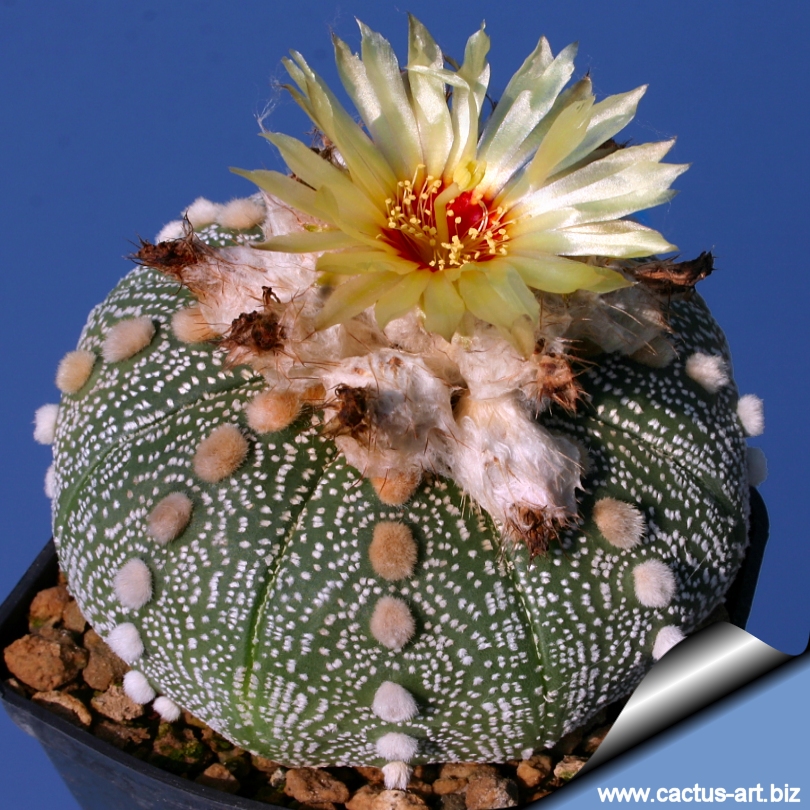
A. asterias is one of the most attractive species of
cactus,
admired by cactus lovers.
|
|
Description: Solitary
geophyte cactus.
Stem: non-branched,
flat, dark green. Diameter 3(8)16 cm. Height 2
to 6 cm. Just flat to the
ground surface, the plant
body grows on the native
habitat practically complete buried . Only in cultivation plants may
have a
spherical till
columnar
shape.
Ribs: 5(8)11, generally it has eight flat ribs, rare few or
more. ( but in cultivation selected
cultivars can have from 4 to 13 ribs), The normal rib number eight
is very stable, independent of the age of the plant.
Roots:
the
underground body is fleshy,
turnip-like, with
fine roots.
Spines: Not any. Only
seedlings show some
rudimentary spines within the first weeks and
months.
Hairy scales: usually loose - are sprinkled over the stem in
irregular
patterns, sometimes arched around the
areoles or on line. Cultivated plants possess sometimes very dense
and big hairy scales. There are also completely flake free pure
green specimens.
Areoles: round, cream-colored till white
hairy up to 6
(3-12) mm) of diameters. The areoles are normally
set in a separation up to 10 mm, but can be very close one to each other
at cultivated plants.
|
|
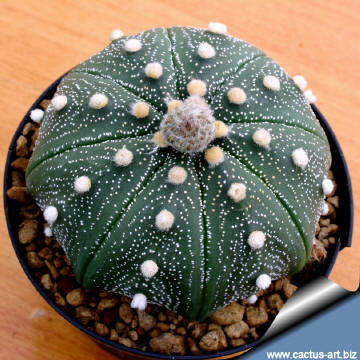 |
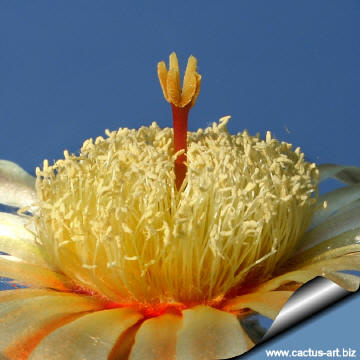 |
|
. |
|
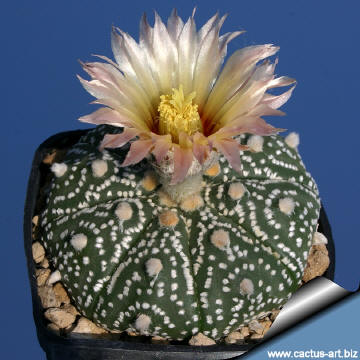 |
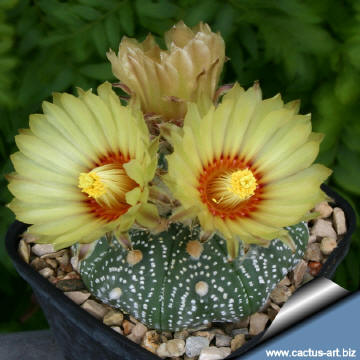 |
|
. |
|
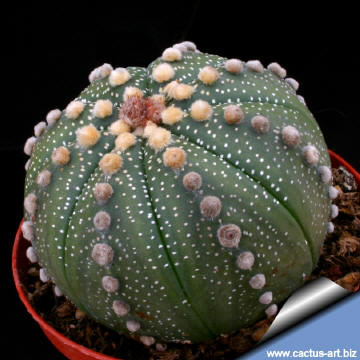 |
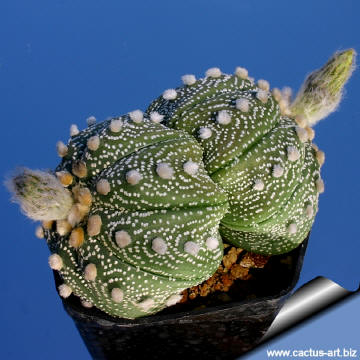 |
|
. |
|
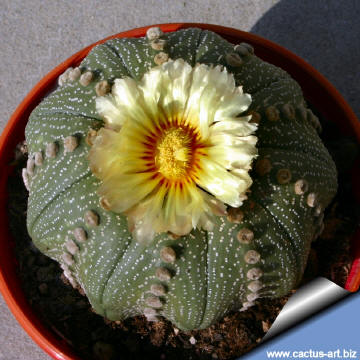 |
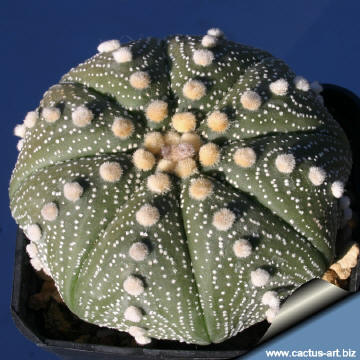 |
|
|
|
Some cultivars |
|
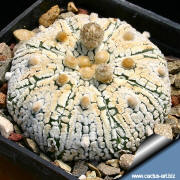
cv. Superkabuto |
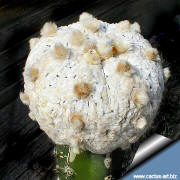
cv. Superkabuto snow (form with woolly flakes) |
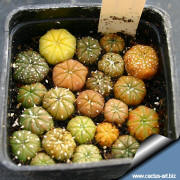
Albinos/coulored and normal seedling |
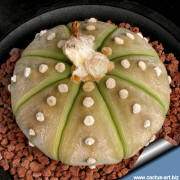
forma nuda |
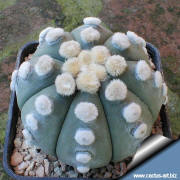
cv Ruri Kakuto
(cv. Ooibo kabuto) |
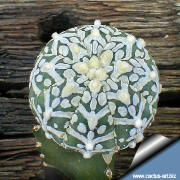
cv. Superkabuto
V-type form |
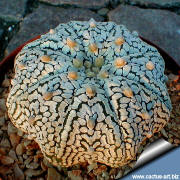
cv. Superkabuto
star form |
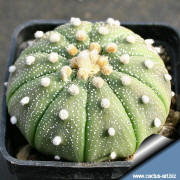
10 ribs (multicostatum) |
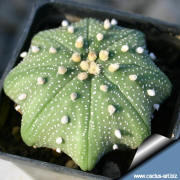
Star shape type |
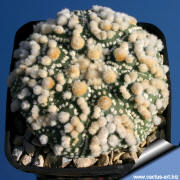
cv. Hanazono |
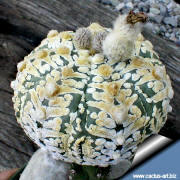
cv. Superkabuto
V-type form "tiger" |
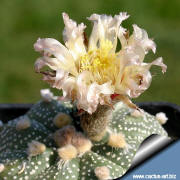
cv. Curly petals |
|
Some
hybrids |
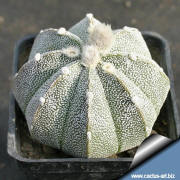
hybr. CO-AS
♀ coahuilense x
♂ asterias |
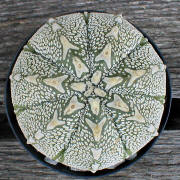
hybr. AS-MYR
♀ asterias x ♂ onzuka |
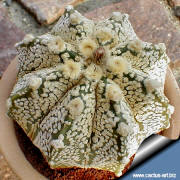
hybr. AS-CAP♀ asterias superkabuto x ♂ capricorne
|
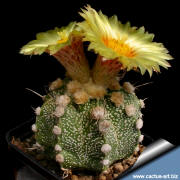
hybr. AS-SEN(AU)
(♀
A. asterias x
♂ A. senilis var. aureum) |
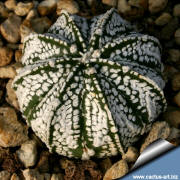
hybr. SK-CO
♀ asterias superkabuto x ♂ coahuilense |
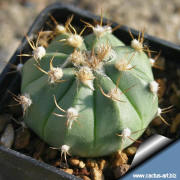
hybr. CA-PAS green
♀ capricorne nudum x
♂ asterias nudum |
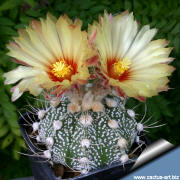
hybr. CAP-AS
♀ capricorne x ♂ asterias |
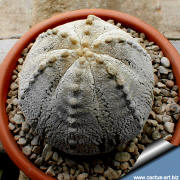
hybr. CO-SK
♀ coahuilense x
♂ asterias SUPERKABUTO |
|
|
|
|
Family:
Cactaceae
(Cactus
Family)
Scientific name:
Astrophytum asterias
(Zucc.)
Lem
Conservation status: Listed in
CITES appendix 1
Common names:
The
name "Peyote" used by the natives comes presumably by the external similarity
to Lophophora williamsii, however there is no closer botanic
relationship. Till now, there is no found of hallucinogenic in the
plants despite multiple contrary assertions.
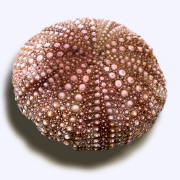 Etymology:
The
generic name "Astrophytum"
derives from the Greek words "aster (αστηρ)", meaning a
"star" and "phyton (φυτον)",
meaning "plant".
( The Genus name implies: "star plant"). Etymology:
The
generic name "Astrophytum"
derives from the Greek words "aster (αστηρ)", meaning a
"star" and "phyton (φυτον)",
meaning "plant".
( The Genus name implies: "star plant").
The
specific name "asterias"
derives from the Greek name “aster (αστηρ)”
that means “a star” an aster type plant*,
and the Greek suffix “ias
(-ιας)
”meaning
“like to, comparable, similar” The specific name
implies:
"star like (like an aster)"
The shell of a sea urchin
* Referring (may be) to the Aster (Aster amellus) Or
to Asterias which is the name of a genus of starfish (but this
plant looks like the sea urchin shell)
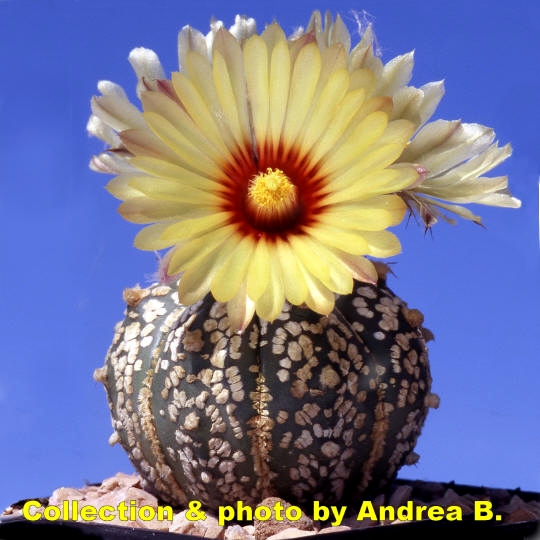
Astrophytum asterias ( cv. Superkabuto)
Flowers are usually
yellow with a red, orange
throat,
plants start blooming when about 3 cm diameter.
|
|
|
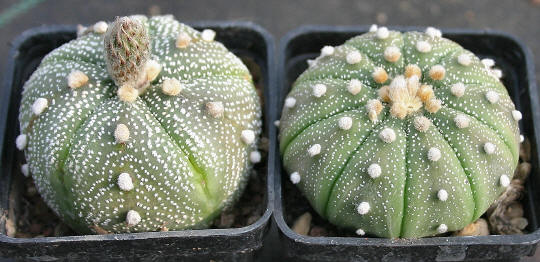
Astrophytum asterias
Generally this plat has eight
ribs, few or more ribs
(like in the photo above) are unusual.
|
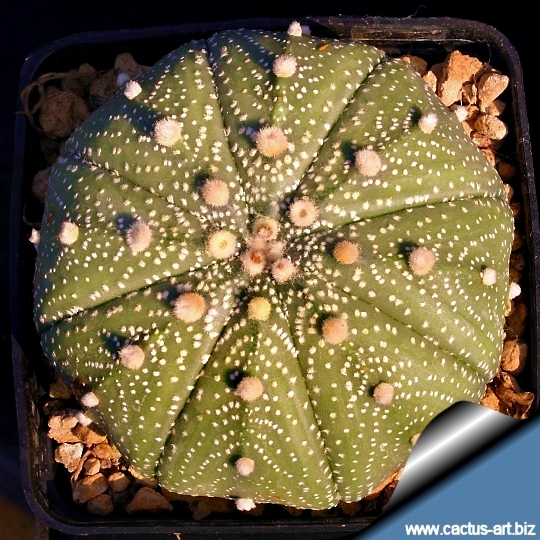
A. asterias (Llera Tam. MX.)
A plant with the typical eight
ribs with white tufts of loose
hairy
scales.
|
|
Cultivation is not too difficult in a
greenhouse, although grows
quite slowly. The plants need a loose well-drained
mineral soil. They need a good amount of
light.
Watering can be done weekly during
summertime, if the weather is
sunny enough, with a little
fertilizer added. Kept this way, plants will
show a
healthy, although slow
growth. They are
frost hardy to -4°
(-10°) C
Propagation:
By
seeds, remembering that
seedlings dislike strong
light and
dry conditions and need to be
repotted frequently. Eventually, as they become mature, they attain a
maximum size of 8-10 cm (20) cm. However, old plants become
senile and have
a tendency to succumb to
disease and a weak
root system. At this
stage,
as is well known, they
die suddenly. So, after they reach
10 cm in
diameter grow them slowly, and adopt a new repotting period, using
intervals of every 2 - 3 years. Additionally grow them under drier
conditions or with stronger sunlight. But plants are often
grafted to accelerate growth as
they would generally take at least a five years to reach
maturity on their
own, but the grafted plants are typical rather tall growing, compared
with plants on their own roots that are usually more flat to the
ground.
|
|
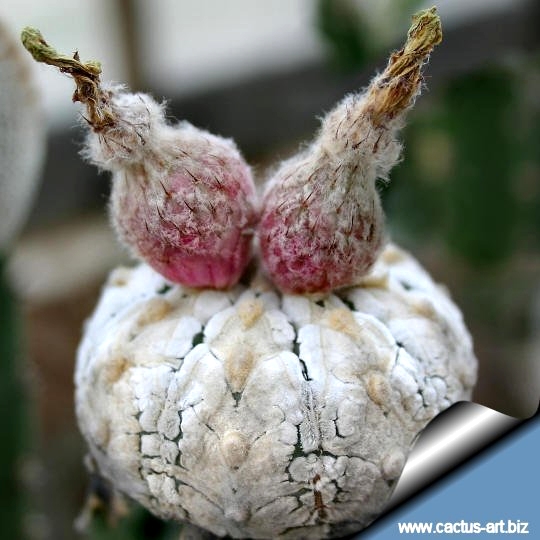
Fruit are
spineless, completely
naked at the lower area with
few
scales and
hairy in the upper area.
(photo: cv superkabuto snow)
Photo of conspecific
taxa, varieties, forms and cultivars of Astrophytum asterias:


|
|